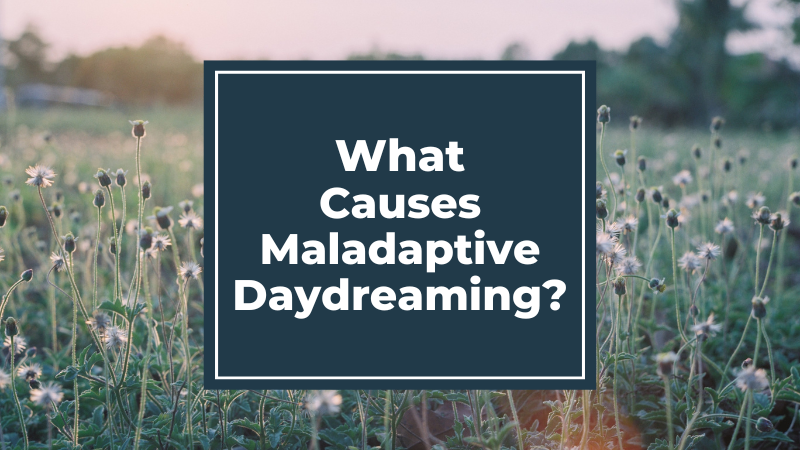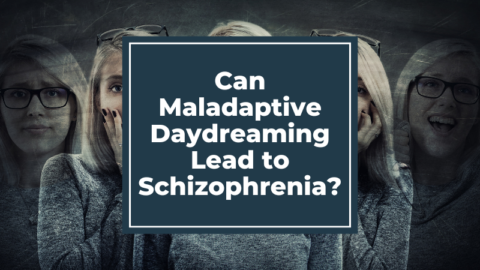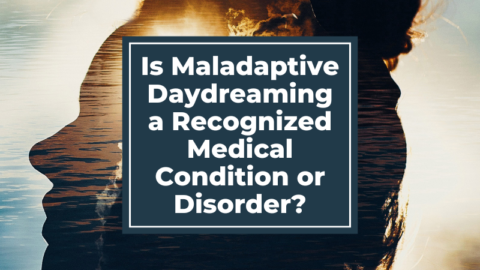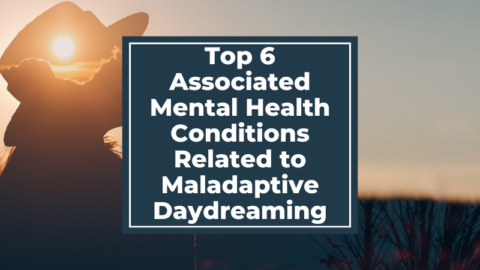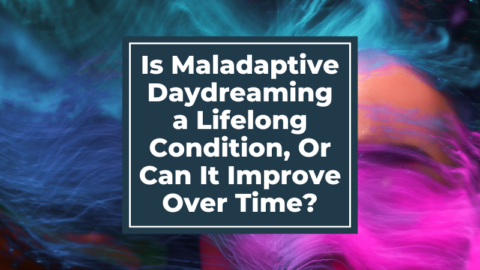Maladaptive daydreaming, a phenomenon characterized by excessive, vivid, and immersive daydreaming that interferes with daily functioning, has captured the attention of researchers and individuals alike. Those affected by this condition find themselves lost in intricate inner worlds, sometimes to the point of distress and impairment. While the concept of daydreaming may seem harmless or even relatable to many, maladaptive daydreaming represents a unique and complex psychological state.
Understanding the causes of maladaptive daydreaming is crucial for shedding light on this intriguing yet enigmatic condition. It involves delving into various factors, including psychological, environmental, neurobiological, and social influences that contribute to its development and persistence. By unraveling these underlying causes, we can gain insight into the complexities of maladaptive daydreaming and pave the way for effective interventions and support.
In this article, we embark on a journey to explore the multifaceted causes of maladaptive daydreaming. We will delve into the intricate interplay of individual factors, such as trauma, imagination, and personality traits, as well as the potential role of neurobiology and social dynamics. By examining these elements, we aim to deepen our understanding of maladaptive daydreaming and offer valuable insights to those affected, their loved ones, and mental health professionals.
Join us as we unravel the mysteries behind maladaptive daydreaming and shed light on the underlying causes that contribute to this fascinating yet often challenging condition.
The Potential Causes of Maladaptive Daydreaming
The exact causes of maladaptive daydreaming are not fully understood, and research on the condition is still evolving. However, several factors may contribute to the development of maladaptive daydreaming tendencies. These factors can vary from person to person and may include:
- Trauma or adverse experiences: Some individuals may use maladaptive daydreaming as a coping mechanism to escape from or cope with distressing or traumatic experiences in their lives.
- Childhood experiences: Certain childhood experiences, such as loneliness, social isolation, neglect, or a lack of emotional support, may contribute to the development of maladaptive daydreaming as a way to compensate for unmet emotional needs.
- Dissatisfaction with reality: Feelings of dissatisfaction or unhappiness with one’s real-life circumstances, relationships, or personal identity can lead individuals to seek solace and fulfillment through elaborate daydreaming scenarios.
- Neurobiological factors: Some research suggests that there may be underlying neurobiological factors involved in maladaptive daydreaming. Brain imaging studies have shown differences in brain activity and connectivity patterns in individuals with maladaptive daydreaming compared to those without. However, more research is needed to fully understand the neurological mechanisms underlying this condition.
- Dopamine and reward system: Maladaptive daydreaming may involve the excessive release of dopamine, a neurotransmitter associated with pleasure and reward. The daydreaming experiences may trigger a pleasurable response in the brain, reinforcing the behavior and making it difficult to control.
- Fantasy-prone personality: Some individuals with maladaptive daydreaming may have a naturally high propensity for fantasy and vivid imaginative experiences. They may find it easier to slip into daydreaming states and become deeply absorbed in their fantasies.
- Internet and media influence: The widespread availability of online platforms and media content can facilitate and perpetuate maladaptive daydreaming. Engaging with immersive media, such as movies, books, or video games, can fuel the creation of intricate daydreaming scenarios and contribute to the compulsive nature of the behavior.
- Co-occurring mental health conditions: Maladaptive daydreaming may be more prevalent among individuals with certain mental health conditions, such as attention-deficit/hyperactivity disorder (ADHD), obsessive-compulsive disorder (OCD), post-traumatic stress disorder (PTSD), depression, or anxiety. These conditions may interact with maladaptive daydreaming tendencies, exacerbating the level of distress and impairment experienced.
- Reinforcement and habit formation: Over time, the repetitive and self-reinforcing nature of maladaptive daydreaming can lead to the establishment of habitual patterns. The more individuals engage in maladaptive daydreaming, the more difficult it becomes to break the cycle and regain control over their thoughts and behaviors.
- Unmet psychological needs: Maladaptive daydreaming may be a manifestation of unmet psychological needs, such as a need for connection, validation, excitement, or control. Daydreaming allows individuals to fulfill these needs in the realm of their imagination when they are not met in their actual lives.
- Creative and imaginative tendencies: Some people with maladaptive daydreaming may have a natural inclination toward creativity and imagination. They may use daydreaming as a way to channel their creativity or explore complex storylines and characters.
- Coping mechanism for emotional distress: Maladaptive daydreaming can serve as a way to cope with emotional distress, such as anxiety, depression, or stress. Daydreaming provides a temporary escape from negative emotions or difficult situations, allowing individuals to create a more positive or fulfilling alternative reality.
- Emotional sensitivity or overactive imagination: People who are highly sensitive or have a vivid and active imagination may be more prone to maladaptive daydreaming. They may find solace or enjoyment in creating detailed and elaborate daydreams as a way to explore different emotions, scenarios, or identities.
- Avoidance of responsibilities or challenges: Maladaptive daydreaming can sometimes be a form of avoidance behavior, where individuals use daydreaming as a means to escape from responsibilities, tasks, or difficult situations they feel unable to confront. It provides a temporary retreat from the pressures or demands of daily life.
- Lack of awareness or control: Some individuals with maladaptive daydreaming may have difficulty recognizing when their daydreaming becomes excessive or problematic. They may lack the awareness or ability to control their daydreaming episodes, leading to significant time and energy devoted to daydreaming at the expense of other important aspects of life.
- Personality traits: Certain personality traits may be associated with maladaptive daydreaming. For example, individuals who are highly imaginative, creative, introverted, or prone to fantasy may be more susceptible to engaging in excessive daydreaming. Those with high levels of absorption may also be predisposed to maladaptive daydreaming. These traits may make daydreaming a more compelling and immersive experience for them.
- Social isolation or loneliness: Feelings of social isolation or loneliness can contribute to maladaptive daydreaming. Daydreaming can serve as a way to create a sense of connection, companionship, or social interaction, especially when real-life social relationships are lacking or unsatisfying.
It’s important to note that while these factors may contribute to the development of maladaptive daydreaming, they do not necessarily guarantee its occurrence. The interplay of various genetic, environmental, and psychological factors likely plays a role in the manifestation of maladaptive daydreaming in different individuals.
Remember that the causes of maladaptive daydreaming are multifaceted, and individual experiences may vary. Further research is needed to gain a comprehensive understanding of the underlying causes and mechanisms of this condition.
More Research is Needed About the Causes of Maladaptive Daydreaming
Maladaptive daydreaming is a complex and intriguing phenomenon that can significantly impact individuals’ lives. While the causes of maladaptive daydreaming are not yet fully understood, the research conducted thus far has shed light on several contributing factors. Psychological, environmental, neurobiological, and social influences all play a role in the development and persistence of this condition.
By acknowledging and exploring these causes, we move closer to developing effective strategies for managing maladaptive daydreaming and providing support to those affected. Awareness of individual triggers, trauma, emotional regulation difficulties, and the role of imagination can help individuals gain a deeper understanding of their experiences and seek appropriate interventions.
Further research and understanding are needed to uncover the intricacies of maladaptive daydreaming, including its underlying mechanisms and potential treatments. The collective efforts of researchers, mental health professionals, and individuals with lived experiences are crucial in advancing our knowledge and providing meaningful support to those navigating the challenges of maladaptive daydreaming.
As we continue to unravel the enigma of maladaptive daydreaming, let us foster compassion, empathy, and understanding. By supporting those affected and promoting awareness, we can work together to create a world where individuals with maladaptive daydreaming feel seen, validated, and empowered on their journey toward healing and well-being.
Do you have questions or an idea about the cause of your maladaptive daydreaming? Make sure to join our forum, share your thoughts, and connect with other maladaptive daydreamers just like you.

